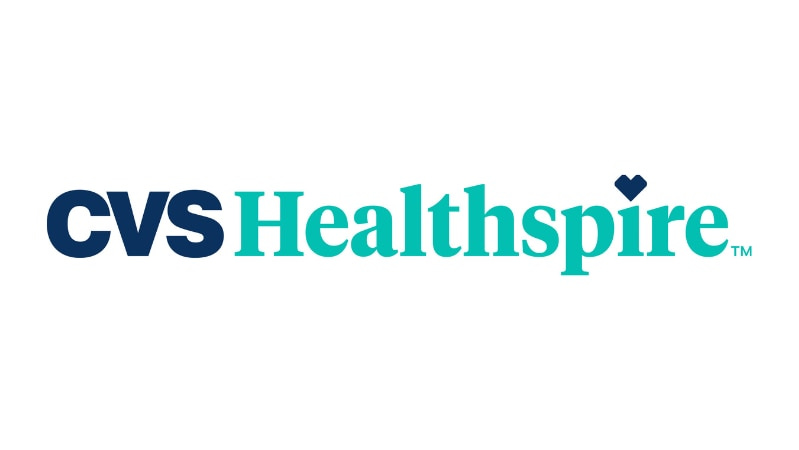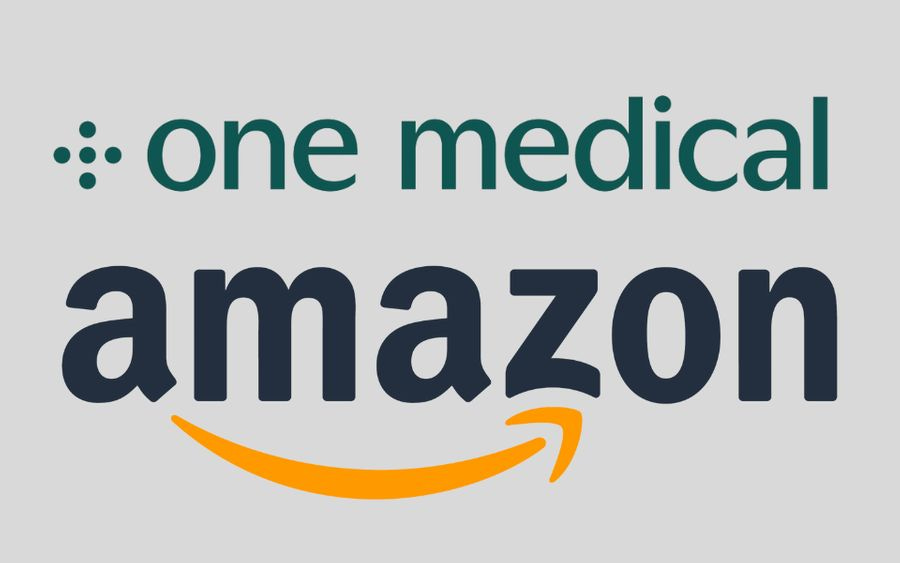Wheels In — Intro + Opening Thoughts
Last week’s webinar featuring Nick Aubin of Commons Clinic and Dean Dalili of DeepScribe was a great success! I enjoyed hosting and ended the session feeling optimistic about the future of specialty care VBC and the ability of tech tools to help get us there. The biggest takeaway: it’s early.
Thanks to Nick and Dean for an engaging conversation! I’d also like to thank the newest addition to “The Surgeon’s Record” team, Dani Calvo, who worked hard behind the scenes to make the webinar a success. Dani’s a digital marketing and video production expert whose talents will support TSR’s continued evolution. Welcome, Dani!
As I learned during the webinar, patience is critical to realizing healthcare change. With that in mind, this week’s newsletter looks at recent developments in retail health where patience has worn thin for most players.
Finally, this week we’re featuring our first cross-collaboration! Healthcare finance guru Blake Madden (of the incomparable Hospitalogy newsletter) graciously agreed to offer his own insights into the current state of Retail Healthcare. Thanks, Blake!
Dem Dry Bones
From the EIC’s Desk
In the pantheon of tropes, “healthcare is complex” is followed closely by “nothing in healthcare happens quickly.” Sometimes, stereotypes ring true. Sales cycles are long. Change management takes forever. Five-year data is considered short term. Healthcare is a battleship, or more accurately, the Titanic: difficult to turn and taking on water. But successfully playing the long game can be rewarding. The corollary of slow change is that once you’re in, you’re often in for good.
Few outsiders have the appetite for the slow pace of healthcare innovation. Investors expect exits and returns on a three-to-seven-year time horizon. Large public companies must report quarterly earnings and answer to their boards. There is constant pressure to increase shareholder value. Health tech unicorns born during the ZIRP environment face exit pressures, and the path is narrow. Meanwhile, market pressures have caused Big Tech and Big Retailers to retrench from once grand healthcare designs.
This week’s edition of TSR updates the current state of Big Retail in healthcare: who’s up, who’s down, and who’s on the way out.
Walmart
In May, Walmart announced an end to its 5-year-old effort to offer in-store healthcare services, branded Walmart Health. With the move, Walmart closed all 51 of its health clinics and ended its telehealth service, MeMD (which was acquired in 2021 and rebranded as Walmart Health Virtual Care). The reason for the shutdown? Walmart couldn’t find a sustainable healthcare business model.
Or so they say. It’s worth considering whether five years is enough time to figure out a care delivery model. In healthcare, outcomes are typically measured in decades. Maybe Walmart Health never had a fighting chance. A revolving door of executives and a misguided focus on low acuity care were notable missteps. Healthcare is hard enough. It’s even harder if your heart’s not in it.
The story isn’t completely over for Walmart Health. Enter Humana and its senior-focused primary care offerings, CenterWell and Conviva. Human plans to open 23 clinic locations in spaces formerly occupied by Walmart Health centers. Interestingly, CenterWell bills itself as payer agnostic, accepting not only Medicare Advantage but also traditional Medicare and some Medicaid. Their care model is like other advanced or alternative primary care models, offering a more comprehensive and coordinated “medical home” approach.
The move makes sense for both parties. Walmart benefits by finding a lessee for its otherwise vacant clinic spaces and Humana finds another outlet for its care delivery business. Humana has a lot riding on government-sponsored insurance plans like Medicare Advantage. The company announced in February it is exiting the Employer Group Medical Products business to focus on MA.
If you’re parsing winners and losers here, Walmart cut its losses and figured out a way to generate revenue from the now unused spaces. Humana’s path is less certain. Negative attention and uncertainty surrounding Medicare Advantage looms. The company is set to lose “a few hundred thousand” members and is planning to exit non-profitable MA plans. Humana stock dropped in April on news of expected lower MA payment rates and took another hit after its July earnings call. (Humana’s stock price is still 10x higher today than it was prior to ACA enactment in 2010). What say you, Blake Madden?
Blake’s Take:
Ben is spot on here. Walmart hasn’t ever really had a cohesive healthcare strategy, and it’s difficult to create one when your core competency lies elsewhere - a theme we’ve seen across retail health players. How did the retail giant go from its pursuit of 75+ store openings by the end of 2024…to shuttering all 51 locations?
Simply put, healthcare is not a core competency here. And to other non-traditional ‘disruptors’ who enter healthcare, despite the size of your checkbook or spirit of change, it would benefit future competitors to enter the space cautiously and with a posture of humility. Know what you’re good at and where you fall short, then double down. Walmart wanted to provide an excellent, transparent consumer experience for its clinics, but couldn’t justify the high cash burn and time horizon associated with clinic buildout. Walmart also couldn’t recruit or retain clinical (or executive/business talent!) for these de novo clinics.
Primary care in healthcare is a loss leader and the clinics weren’t creating enough downstream value to Walmart’s profitable segments (pharmacy, vision, supplements, groceries, etc.). The firm, despite material turnover at the highest level, tried to salvage it by partnering in Medicare Advantage and with health systems on downstream specialist referrals, but the original strategy deteriorated, and so here we sit today.
In the future, if it ever becomes a strategic priority, I would guess Walmart may try to enter healthcare in a big, splashy way to get their foot in the door quicker. I know the Walmart-Humana merger ultimately failed - as did Walmart and ChenMed, which appears to be having its own acute operating struggles. But Walmart’s presence in healthcare is far from over. Case in point - at the very least, as Dr. Schwartz mentioned, it’s leasing the clinical space back to Humana’s CenterWell and Conviva, Mercy Health, and announced today, is leasing another Walmart Health facility to Access Medical Clinic
Walgreens
Proving that imitation is the sincerest form of flattery, Walgreens is also distancing itself from retail health. Earlier this year, Walgreens Boots Alliance (WBA) took a $6 billion write-down on its VillageMD primary care clinic chain. Like Walmart, Walgreens lasted less than five years in retail care delivery. During those five years, WBA made several aggressive healthcare moves, including:
Investing $1 billion in VillageMD in 2020 followed by another $5.2 billion cash infusion a year later
In 2022, VillageMD (a separate entity but majority-owned by Walgreens) acquired medical practice Summit Health for $9 billion.
Investing over $300 million in home health company CareCentrix which, along with VillageMD, formed the core of Walgreens health
Those are dizzying amounts of money. Yet, in March, Walgreens announced plans to close 160 VillageMD clinic locations.
Freshly lightened of its VillageMD burden, Walgreens’s U.S. Health President Mary Langowksi recently suggested she’s still bullish on retail healthcare. “We really think that if you take our core assets … we can be a really good partner,” she said. Emphasis mine.
Like many Big Retailers and Big Tech companies, Walgreens is retrenching to core competencies (in this case, pharmacy), and they’re happy to let someone else take the risk. “I think a strategy for us is less capital-intensive, capital-light and very scaled models,” Langowski added. Investors rejoice.
But therein lies the rub. After more than four years and lots of investment, Walgreens (like Walmart) didn’t have the stomach for middling financial results nor the appetite to seek a way forward. Like Humana, Walgreens’s stock price has taken a significant hit, in no small part due to its healthcare misadventures. WBA is down 53 percent in 2024 and experienced one of its worst days on record at the end of June following the release of third quarter financial results. (Unlike Humana, WBA lacks a post-ACA insurance product windfall).
Last week, Walgreens announced it’s considering a sale of its entire VillageMD stake. The care delivery business is simply too big of a money pit, an anchor weighing down WBA’s financial performance. Will Walgreens find a taker? Is Walgreens Health a distressed asset capable of a turnaround or too toxic to touch?
Blake’s Take:
Where do we even start with Walgreens? Apart from Shields, the struggling retail pharmacy player cobbled together some healthcare assets through M&A and tried to sell investors on its transformation into a healthcare delivery platform. Since acquiring Summit Health, VillageMD’s performance has deteriorated. Performance has gotten so bad that Walgreens is at the point where it’s divesting investments across its portfolio to support its debt load in an attempt to build out more efficiency.
Over the past year or so, Walgreens and Cigna’s Evernorth have written down goodwill on VillageMD to the tune of $5.8 billion and $1.8 billion, respectively. Current VillageMD profitability can’t support its valuation, and it’s a huge cash drain on the Walgreens enterprise. Walgreens is in the process of cutting costs and shutting down unprofitable clinics - often co-located, so they can’t really even be sold. As a result, in a shocking move announced earlier in 2024, VillageMD exited its largest market in Florida, and several smaller markets in Illinois, Rhode Island, Nevada, and I’m sure more.
For a $140+ billion in annual revenue enterprise, it’s shocking to see Walgreens down 60% in 2024. The firm should be big enough and have enough time to figure out a working strategy in healthcare as the retail pharmacy segment continues to stall.
CVS
CVS/Aetna is leaning hard into healthcare delivery. It’s not a stretch to suggest CEO Karen Lynch’s future and legacy are deeply intertwined with CVS’s healthcare push. To recap, in the last few years, CVS:
Led a $100 million investment in alt primary care company Carbon Health
Acquired home health company Signify Health for ~$8 billion in March 2023
Acquired advanced primary care provider Oak Street Health for ~$10.5 billion in May 2023
Launched Cordavis, a subsidiary working with manufacturers to produce biosimilar medications
Rebranded its health services business to “CVS Healthspire”
As recently as May, CVS Health leadership appeared bullish on the company’s healthcare outlook. Then came the headwinds. Last week, CVS cut its 2024 financial forecast due to rising costs in its health insurance business, primarily Medicare Advantage. It’s the third time this year CVS adjusted its projections downward. To allay stockholder fears, the company announced a $2 billion cost-cutting program and promised more use of “artificial intelligence.” (Perhaps bad timing: AI’s losing its luster too). CVS’s stock price is down more than 20 percent for the year (though still up big since 2010).
Where does this news leave Oak Street Health? So far, CVS has not announced plans to close any OSH locations. In fact, 25 new clinics are scheduled to open by the end of the year. But there are signs the primary care business is weighing on CVS’s financials. In May, news leaked that the company is looking for a capital partner, likely a private equity firm, to support OSH expansion. While it’s not clear how much scaling Oak Street is hurting the top and bottom lines, OSH posted losses of $415 million in 2021 and $510 million in 2022 (prior to the CVS acquisition).
For now, CVS appears willing to play the long game with Oak Street: seeking ways to continue expansion while mitigating pressure from Wall Street. Will it work? Analysts are still mostly bullish on CVS. But if a capital partner never materializes and the $2 billion cost-cutting effort falls short … what then, Blake?
Blake’s Take:
Of all these players, CVS holds the biggest potential for a turnaround when talking about healthcare specifically. And it’s pretty simple: they have the right assemblage of assets to weather short-term headwinds and get back on track.
Aetna and Caremark create vertically integrated benefits for the CVS-wide enterprise. And I’m also willing to bet CVS eventually finds a financial backer for Oak Street Health clinics. Over time, the Oak Street acquisition will prove its value, and most of that value will stem from the overall CVS flywheel and cheaper customer acquisition for OSH/Aetna.
Interestingly, another highly underrated benefit to CVS lies in leveraging a key clinical player - the pharmacist. CVS employs around 30,000 pharmacists, and after having conversations with folks, it makes sense why CVS is co-locating Oak Street Health advanced primary care clinics within its retail footprints. Oak Street can and will leverage pharmacists (despite already being quite busy) as extenders for all sorts of patient-facing functions, especially when it comes to the medication side of things or following up via phone with Aetna members.
As the above thesis plays out, we’ll probably see some growing pains in the meantime for CVS. Ben did a great job of summarizing CVS’ strategic moves above along with the recent guidance cuts, and if you’re interested, I highlighted some pain points for CVS in 2024 here as well.
To summarize, here are some key short-term headwinds for CVS this year:
CVS has lost several major PBM customers
Medicare Advantage is performing terribly in 2024 for payors (look at Humana)
Oak Street Health buildouts are burning significant capital
At the end of the day, CVS is too big to fail and too entrenched in healthcare. The question is whether the managed care behemoth holds enough shareholder upside to attract investors.
Amazon
Here’s a brief sampling of Amazon’s healthcare moves:
Acquired PillPack for $753 million in 2018
Acquired subscription-based primary care provider One Medical for $3.9 billion in 2023 (and, along with it, Iora Health)
Launched, then closed, Amazon Care (a healthcare delivery service for employees)
Introduced Amazon Clinic, a virtual health service focused on common conditions
Re-branded Amazon Clinic to “Amazon One Medical Pay-per-visit”
Amazon’s healthcare strategy differs a bit from other retailers. Its closest comparator and rival is Walmart. Neither company has a direct payer relationship or association, and both have retail offerings far beyond health and wellness. Amazon differentiates with a strong technology presence. Amazon Web Services (AWS), forever the quiet giant, offers cloud storage, artificial intelligence, machine learning, and a host of other healthcare adjacent services. AWS provides something of a hedge while Amazon figures out its care delivery approach.
Despite its size and reach, Amazon is not immune to the care delivery struggles being experienced by other Big Retailers. According to Business Insider, an internal memo suggests Amazon expects to lose $1 billion from its healthcare business in 2024 (the company disputes the memo’s accuracy). Like its competitors, Amazon’s stock took a hit recently due to missed revenue estimates.
Amazon doesn’t break out its healthcare business results, but the disputed memo provides some insight:
Despite the $1 billion loss, revenue is up 28 percent to around $4 billion
One Medical is still losing money, but less so, from a reported $597 million to the actual $506 million
Ditto Amazon Pharmacy, from a reported $515 million to the actual $420 million
These are signs of progress with much work to be done. With its size, scale, and scope, Amazon may be better positioned to play the healthcare long game. The memo goes on to detail several steps the company is taking to improve its healthcare financials:
Decrease head count, reduce management layers
Cut One Medical fixed costs, including cost-per-visit
Increase the number of visits per provider
Consolidate management structure? Cut fixed costs? Increase provider workload? These are moves straight out of the corporate healthcare management playbook. Depending on your point of view, this is either a sign of a maturing healthcare company or evidence of inescapable CPOM evils. (Earlier this year, concerns over One Medical’s call center operations raised eyebrows.)
While there is still a long way to go, Amazon seems better positioned to keep iterating its healthcare approach—without the same pressures faced by Walmart, Walgreens, and CVS. One additional observation: unlike its competitors, Amazon has not hitched its healthcare wagon to Medicare Advantage and PBMs. Both have been lucrative for payers and vertically integrated retailers, but both are facing significant scrutiny and uncertainty. One Medical offers a membership model and bills insurance under FFS (allegedly at favorable rates). Amazon Pharmacy offers low-cost medications delivered straight to your front door, minus the middleman.
(Interestingly, we don’t hear much about MA-focused Iora Health. After the One Medical acquisition but pre-Amazon acquisition, Iora Health accounted for 5 percent of One Medical’s membership but 50 percent of its revenue growth.)
By leveraging its tech capabilities and avoiding the uncertainty surrounding Medicare Advantage, is Amazon better insulated from pressures facing other Big Retailers? Earlier this year, CEO Andy Jassy made unflattering comments about the current state of American healthcare, predicting that his “kids’ kids will not believe what the health care experience was for us.” Strong opinions about healthcare abound, but the industry has humbled even the mightiest. Will Amazon be any different? They don’t give out medals for outlasting the competition, but failing to finish.
Blake’s Take:
Amazon is another interesting one. Of all the non-traditional retail players, Amazon tried to pursue a radically, consumer-friendly approach to healthcare through Amazon Pharmacy, expansion of RxPass, Amazon Clinic, and overpaying for buying One Medical - and attaching all or most of these offerings to Prime to create a platform-like healthcare experience. Unfortunately, some of these initiatives have taken a hit. It essentially shuttered Clinic, its telehealth matching platform, and folded it into One Medical.
While Amazon is funding $1B+ losses in Pharmacy and One Medical, it’s very possible some of those losses are being recouped via Prime subscriptions or other purchases on-platform. There’s not as much friction in a few clicks. Amazon also holds more leeway in healthcare given the Prime model as a platform approach and the ability to cross-subsidize if it so chooses. Amazon is doing some great things with Pharmacy but am a bit more dismayed at its care delivery attempts. Even more damning here is the news of Google dropping One Medical (~10% of its revenue) for fellow employer-focused provider Premise Health.
Still, Amazon’s ‘Medical Care’ segment takes up valuable real estate on the front page of its website. At least on my screen, it’s one of the first icons I see on the home page of relentless.com.
Small Incisions
Quick Takes on Timely Topics
Northwell Health expands into entertainment with new film studio (Fierce Healthcare)
Many reacted to this announcement with derision. Have we sunk so low that the largest healthcare organization in New York is turning into a media and entertainment company? But given the industry’s flagging Q-rating (see below), this move makes sense. Negative sentiment and distrust of the healthcare system are growing problems. Violence towards care providers is up. So is burnout. Efforts to humanize healthcare and the people who provide it are desperately needed.
UnitedHealth-HCA rate dispute in Texas, Colorado (STAT News)
What happens when giants play tug-of-war with the healthcare golden goose? We’ll soon find out. UHG’s stock price is up 1,600 percent since 2010 and HCA’s is up 1,000 percent since its 2011 IPO. Meanwhile, physician reimbursement is down 26 percent since 2001 (adjusted for inflation) with another proposed cut coming next year. Patients, caught in the middle of these disputes, grow increasingly dissatisfied (see below).
Survey reveals widespread dissatisfaction with U.S. health care system (The Hill)
Poll results should always be taken with a grain of salt. They’re an imperfect and flawed research tool. But sometimes, polls crystallize what we know but don’t want to admit. In this case, the level of frustration with the U.S. healthcare system. Doctors and nurses are more favorably viewed than the overall system, but our numbers are declining, too. The reasons are many (enough for an entire separate post), but an underappreciated aspect of delivering healthcare “value” is reversing this trend. Failure to do so makes things a lot harder.
The Gold Standard
Polling the Crowd
The Light Box
Healthcare Visuals
From the Gallery
Amplifying Community Voices
Wheels Out — Signing Off and Looking Ahead
Big Retail’s healthcare story is still being told. Many (including myself) have pointed out that using primary care as your healthcare entry point doesn’t make a whole lot of sense. The margins aren’t favorable and, like or not, primary care works best financially as a means of capturing downstream revenue (i.e., specialty care, imaging, procedures, and other ancillary service lines). Currently, no Big Retailer seems willing or able to pursue this level of verticalization.
Value-based specialty care tied to cost-efficient outpatient centers is the care model capable of attaining the goals of better outcomes, higher value, and elevated provider/patient experience. The financials work a lot better too—no long game necessary.
Until next time,
Ben Schwartz, MD, MBA
Editor-in-Chief/Senior Clinical Fellow
















Outstanding analysis. Great to see Blake Madden’s input along side Ben’s